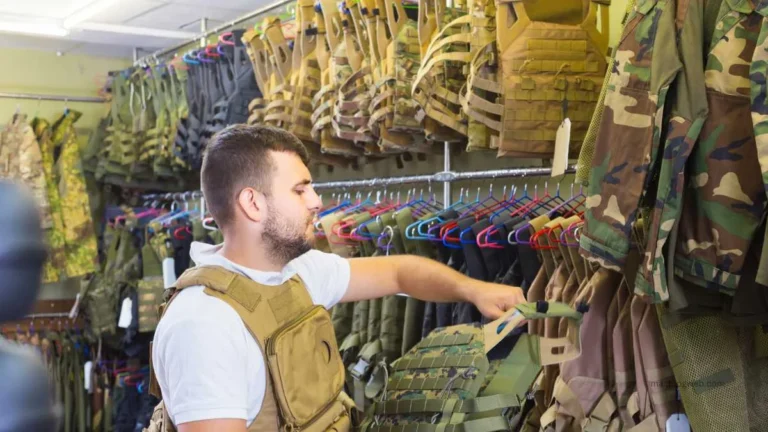The flak jacket, a type of body armor designed primarily to protect wearers from the shrapnel of high-explosive weaponry, is a vital piece of military equipment with a storied history. Its development, variations, and applications reflect the evolving needs of armed forces in the face of changing warfare technologies. This comprehensive article delves into the origins, design, use, and modern iterations of flak jackets, highlighting their importance in military and tactical operations.
Origins of the Flak Jacket
The term “flak jacket” comes from the German word “Fliegerabwehrkanone,” meaning “aircraft-defense cannon,” commonly abbreviated as “flak.” These anti-aircraft artillery systems were notorious for producing high-speed shrapnel, which posed a significant risk to aircrew and ground troops alike. The need for effective protective gear against such fragments led to the development of the first flak jackets during World War II.
Initially, flak jackets were constructed from ballistic nylon, a thick, synthetic fabric designed to absorb and disperse the energy from high-speed projectile impacts. These early versions were effective against shrapnel but were bulky and cumbersome, limiting mobility and comfort.
Design and Material Innovations
Over the decades, the materials and design of jackets have evolved significantly. The original nylon fabric was eventually supplemented and then replaced by more advanced materials like Kevlar, a synthetic fiber known for its high tensile strength-to-weight ratio. Kevlar dramatically improved the effectiveness and wear ability of flak jackets, making them lighter and more resistant to penetration.
Modern flak jackets are typically made using a combination of layered synthetic fibers and, in some cases, incorporate plates of ceramics, steel, or titanium. These materials provide enhanced protection against a range of threats, including higher velocity fragments and some ballistic impacts.
Functionality and Protection Levels
Flak jackets are primarily intended to protect against shrapnel from explosives such as grenades, mines, and artillery shells. The jacket’s construction allows it to catch and slow down fast-moving fragments before they can penetrate the body. While traditional jackets were not designed to stop bullets, certain modern designs include additional armor components that can protect against specific threats, including some types of small arms fire.
It’s important to note that the effectiveness of a flak jacket can vary based on several factors:
- Projectile Type: Flak jackets are most effective against high-speed, low-mass fragments.
- Angle of Impact: The angle at which a projectile strikes the armor can affect penetration, with oblique angles generally offering better protection due to increased material interaction.
- Distance: The effectiveness can also depend on the proximity of the explosion or the range from which a projectile is fired.
Tactical Uses and Applications
Originally developed for military use, flak jackets have found applications in various fields where individuals face risks from flying debris and fragments. Law enforcement agencies, bomb disposal units, and even some civilian sectors where explosive materials are handled routinely use jackets for protection.
In military scenarios, jackets are part of the standard combat gear, especially for personnel involved in explosive ordnance disposal (EOD) or those serving in active artillery units. The jackets are also crucial for aircrews and infantry troops in conflict zones where IEDs (improvised explosive devices) and mortar attacks are common.
Evolution into Modern Body Armor
While flak jackets provided the blueprint for modern body armor, the two terms are not interchangeable. Today’s body armor offers protection levels categorized by the ability to withstand specific types of projectiles, from handgun rounds to rifle bullets. Modern tactical vests often incorporate “plate carriers,” which hold ceramic or metal plates that can stop higher-caliber projectiles than traditional flak jacket materials.
Challenges and Future Developments
The primary challenge in developing effective flak jackets and body armor is balancing protection with wearability. Heavier, more protective gear can encumber body movements and be fatiguing over long periods, while lighter materials may offer insufficient protection against emerging threats. Ongoing research focuses on developing new materials and designs that optimize this balance, potentially incorporating non-Newtonian fluids and advanced polymers.
Conclusion
From its inception during World War II to its current applications, the flak jacket has been a crucial development in protective gear. It has undoubtedly saved countless lives, evolving with advancements in materials science and tactical needs. As modern warfare and safety technologies continue to develop, the jacket will likely continue to evolve, offering better protection and greater comfort for those in harm’s way.
